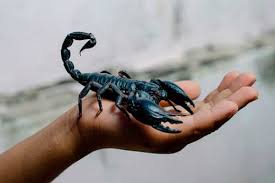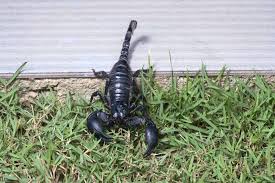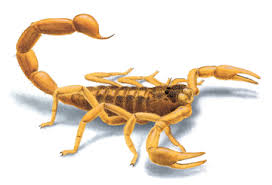How to Prevent a Pest Infestation
Integrated Pest Management, or IPM, is a holistic approach to pest management that includes prevention and monitoring. IPM yields multiple benefits to the environment because it limits the need for chemicals. The main idea behind IPM is to do what you can to prevent pest infestations before they begin. IPM is also referred to as general pest prevention.
Integrated Pest Management
If you have problems with common household pests such as ants, cockroaches, fleas, spiders, and rodents, or simply want to prevent future infestations from occurring, following an integrated pest management program will benefit your home or business.
As mentioned in our how to prepare your home for pest treatment guide, many pest problems can be controlled by making changes to the infested areas. For example, if a home has a major problem with rodents, and rodent traps are consistently trapping rodents, rodents are more than likely gaining entry to your home easily. You may have low hanging branches that touch your roof or windows that have been left open. Removing these entry points to your home could dramatically reduce your rodent population.
The following are smart, easy ways to prevent a pest infestation in your home or business:
1. Clean out clogged gutters
2. Trim bushes and trees away from the structure
3. Remove heavy mulch build-up
4. Ensure that the property irrigation system is managed properly
5. Use sticky traps and live catch traps to monitor and catch pests
6. Keep any moisture buildup away from the foundation of the structure
7. Seal off pest entry points, including cracks and gaps under garage doors, around windows, and where wires enter the structure
8. Eliminate clutter indoors, especially in basements, attics, crawl spaces, garages, and other storage areas
9. Maintain general cleanliness and sanitation standards around and inside the structure
10. Keep firewood stacked off the ground and away from the home
We recommend applying monthly insecticide applications around your structure beginning in early August and continuing through November (or the first frost of the season). Once the frost has thawed in the spring, you can resume monthly applications. Be sure to use the highest recommended usage rate when spraying. The goal of these applications is to keep overwintering pests out of your home or structure.

A Guide to Home Pest Control
stink bugs, large outdoor cockroaches, and wasps begin finding their way into your warm home. While 74 percent of Americans surveyed by Raid believe they have more bugs in the home in summer, what they may not know is their home remains susceptible to unwanted visitors well into the cooler months.
Seal Your Home Against Insects
As temperatures drop, food, water, and shelter become more difficult for insects to find outdoors, which can cause them to invade your house looking for these disappearing resources they need to survive.
To help prevent this from happening:
Weatherproof all windows and doors to seal off cracks around ledges and edges. This will help to keep outdoor pests outdoors.
Check your home for light leaks and seal any exterior-opening gaps or cracks that can enable pests as large as rodents and bats to get in.
Caulk cracks along bathroom and kitchen fixtures. Even the tiniest of these can enable insects to sneak in and provides them with easy access to the water they need for survival.
Fortify Your Defense Against Pests
You might miss a few areas when sealing your house, and that’s where backup products come in.
Use long-lasting indoor/outdoor labeled pesticide products to spray around the perimeter of your house and larger entryways like doors. For best results, apply both indoors and outdoors.
To keep pests out of indoor sensitive areas, such as kitchen sinks, backsplashes, and bathrooms, use a product that is labeled for these areas and has a precise-tip applicator enabling application into tight spots, cracks, and crevices.
Keep floors swept, counters wiped, and food stored in the refrigerator or insect-resistant packaging. This will help reduce rodent and insect attraction and ensure you are not providing easy access to food and water for their survival.
Break Bad Habits That Attract Pests
Cooling temperatures are not the only factor attracting bugs to your house—in fact, your everyday actions may be inadvertently inviting bugs in. To help keep pests out, change the following habits:
Do you store firewood next to your house? If you do, you are inviting wood-boring pests to invade your home. Always store firewood at least 3 feet away from your house and bring in only the amount that you will burn quickly. This will keep pests that do come in on the firewood from crawling off and taking shelter in your home.
Are there any recycling bins stored in an attached garage or near your home? The remnants of soda and other food products can attract ants. While the sight of a few ants might not be alarming, ants will leave a scent trail for other ants to follow.
Do you have piles of old paper, fabric, or other clutter sitting in an out-of-the-way place—or even a regularly used room? These can provide shelter (and even food) for several insect and rodent pests. Keeping your home clean means limiting its attraction to pests.
Ways to Keep Rabbits Out of Your Garden
To many people, the image that comes to mind at the mention of a rabbit is a soft, fluffy cute bunny; for children, the image may be a caricature of a rabbit carrying a basket of eggs or even of the cartoon character, Bugs Bunny. But for those who love to garden, a rabbit is a destructive, annoying pest that eats up the landscape and causes expensive damage.
How Do You Know if a Rabbit Is Eating Your Garden?
The first step is to determine if it is rabbits eating your garden by looking at the evidence. One very reliable sign of marauding rabbits is when you see the area scattered with coarse, round, fecal pellets—the scat (poop) of rabbits. Depending on the species, these may be 1/4 inch to 1/2 inch in size. You may also see rabbit hair or fur caught on or under tree branches, rabbit trails, or nesting areas under bushes or brush.
Feeding
Rabbits can, and will, eat just about any tender plant. In the spring, they will feed on newly sprouted grass and clover; in the fall and winter when food is less available, they will survive on whatever bark and seedlings they can find. But all too often, the rabbits’ favorite food is exactly the same foods loved by the homeowners—the delicious produce found in vegetable gardens and on fruit bushes
Gnawing
Although about any tree can be gnawed by rabbits, they prefer the smooth, light bark and tender shoots of young trees over the rough, tough bark of older trees. Tree gnawing can cause significant damage, particularly if the rabbits completely gnaw off all the bark or any essential branches. Rabbits will gnaw on things other than plants, including hoses, wires, and cloth. As anyone who has kept pet rabbits in the home knows, rabbits will gnaw on almost anything, including furniture, shoes, clothing, cables, and wires.
Garden Fencing
As is true when you are trying to protect against any wildlife, the top recommendation is to use of fencing around the garden or any other area requiring protection. Chicken wire with 1/2- to 1-inch mesh is a good choice for guarding against rabbits The fence must be at least 2 feet high to keep rabbits from jumping over it. To prevent rabbits from burrowing under it, the fencing should extend at least six inches below ground or be secured to the ground to keep the bottom edge tight. Electric net fencing also can be used for temporary control around seasonal gardens.

Ultimate Guide to Pest Control
Ants
There are more than 700 species of ants in the United States alone. Fortunately, not all of them live where you do. Having said that, fire ants and carpenter ants can cause big problems, damaging homes and stinging people, especially as temperatures heat up and rains are heavier. Plus, some people have allergic reactions to their stings, which can sometimes be life threatening.
Fire Ants
Fire ants live in mounds in lawns, on sidewalk edges, under concrete driveways, in electrical boxes, compost piles, and mulch, among other locations. Mounds are less than 18 inches in size and, when rains are heavy, the colony may head for higher ground, away from the saturated soil—including moving into homes.
This species will aggressively defend its mounds and surrounding areas, working in groups to attack children, pets, gardeners, and so forth if they feel threatened. Plus, unlike other types of pests, individual fire ants can continue to sting people and animals.
Stings can be quite painful, with skin irritations and itching sometimes lasting for days. For relief, you can try hydrocortisone cream, antihistamines, cold compresses, and oatmeal baths.
Carpenter Ants
Carpenter ants excavate wood when making room for a nest and, when they dig at the wood in your home in large numbers, the house’s structural soundness can be severely compromised. So, it’s not surprising that carpenter ants have been considered one of the top five in pestiness in the United States.
How to Prevent and Get Rid of Cockroaches
The sight of a cockroach scurrying across the kitchen floor will send most homeowners straight to the phone to call an exterminator. The fact that some species can fly only adds to the revulsion.
The truth is, of the 4,500 roach species in the world, only about 60 find their way into homes and most of those don’t want to be in your home any more than you want them there. So, how do you get rid of cockroaches? It starts with knowing your enemy since each species will require a different approach.
German vs. American Cockroach
Roaches are known vectors for disease and can make certain health conditions, like asthma, worse.
German roaches are small and brown. Some people call them “kitchen roaches” because they thrive indoors, and tend to prefer the kitchen (and bathroom). These guys can’t fly.
Asian roaches look like the German species, but they can fly. They prefer the outdoors but do wander inside sometimes.
American roaches, which are larger and deep brown, also prefer to be outside. They are flying opportunists. If they have easy access to food or water, they will make themselves at home.
Palmetto bugs, which are as large as the American (two inches on average), are black. They also prefer the outdoors and fly, but they will eat your pet’s food or that pie you left on the counter.
Prevention Is Your Best Defense
Roaches are resilient and can become immune to many products, particularly those found on your grocery store shelves. Failing to properly get rid of roaches can cause the problem to get worse. The best defense against roaches is to make sure you never have any in your home in the first place–and if any get in, ensure they are dealt with swiftly.
The key is to make your home inhospitable to roaches:
Keep counters, floors, stovetops, and tables clean.
Wipe down all surfaces (counters, stove, etc.) after each use.
Don’t leave any food out overnight or even during the day.
Take your garbage out regularly.
Pick up pet food and water bowls every night.
Don’t leave dishes in a sink full of water “to soak” overnight.


